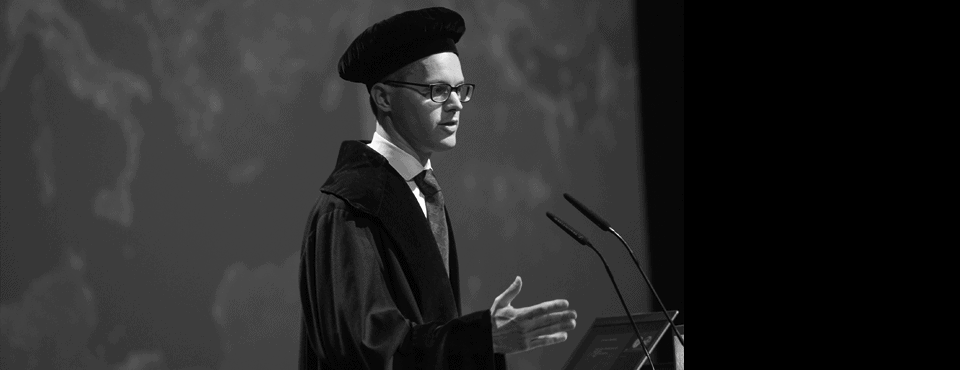Repost from spatialeconomics.nl
Cities are a very old phenomenon and, argued by many, one of the greatest human inventions. By 2050, two-thirds of the world’s population is expected to live in cities. The future of mankind is thus an urban one. With these words brand-new professor Hans Koster opened his inaugural lecture ‘Reinventing cities: Evaluating effective urban policies’. The ceremony took place on 23 September 2021 in the Aula of the Vrije Universiteit Amsterdam.
More specifically, Hans Koster spoke about the importance of urban policies, enabling cities to reinvent and develop themselves. ‘Ever since the birth of cities, humans have tried to impact and influence the development of cities, by providing defense and safety works, by investing in better transportation networks, by imposing strict urban planning rules, and by devising policies that reduce crime, air pollution, traffic congestion, and improve the quality of the building stock. Some of these policies have been effective, while others may have been a huge waste of public money’, he says.
Design new policies while looking at how policies played out in the past
‘While policy makers and politicians alike talk a lot about what policies should be implemented, often little is known about the effectiveness of policies after they have been implemented. This is worrisome, because when we would know what really works, more effective policies could be devised to make cities better places to live. To put it differently, we should not only talk about the design of new policies, but also about how policies in the past played out’, he continued.
Based on his own research in the past years using quantitative methods and models catered to urban problems, he then discussed the often unintended effects of policies, and which policies seem successful and which doesn’t. He made a distinction between policies that affect the liveability of cities, the sustainability of cities and the accessibility of cities. Examples include policies that limit the size of cities by urban growth boundaries, policies to develop wind turbines and solar farms, policies that forbid short-term rentals like Airbnb, and policies trying to reduce traffic in the city by increasing parking prices.
Hans showed that urban economics provide tools and methods to analyse the effectiveness of policies, which unquestionably have large effects on how a city looks like and function. Because of that, economic and social policies should be evaluated more rigorously. While cost-benefit analysis is now an integral part of large spatial policies, it seems to make sense to also analyse the results of the policy after, say, 5 or 10 years. Predicting the future is hard for everyone. So learning about the past to not make the same mistakes in the future is probably the best we can do!
Publisher: Source link










